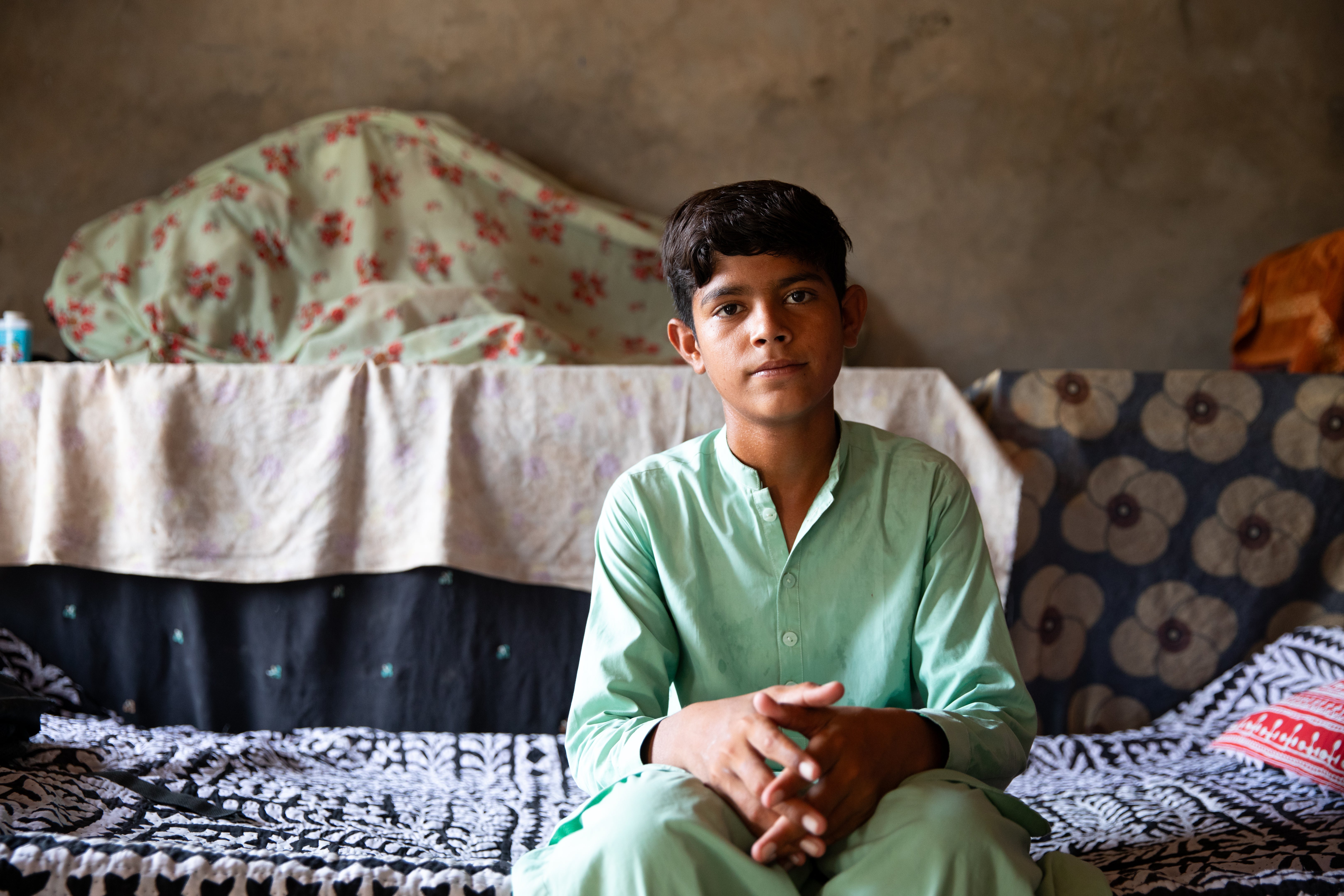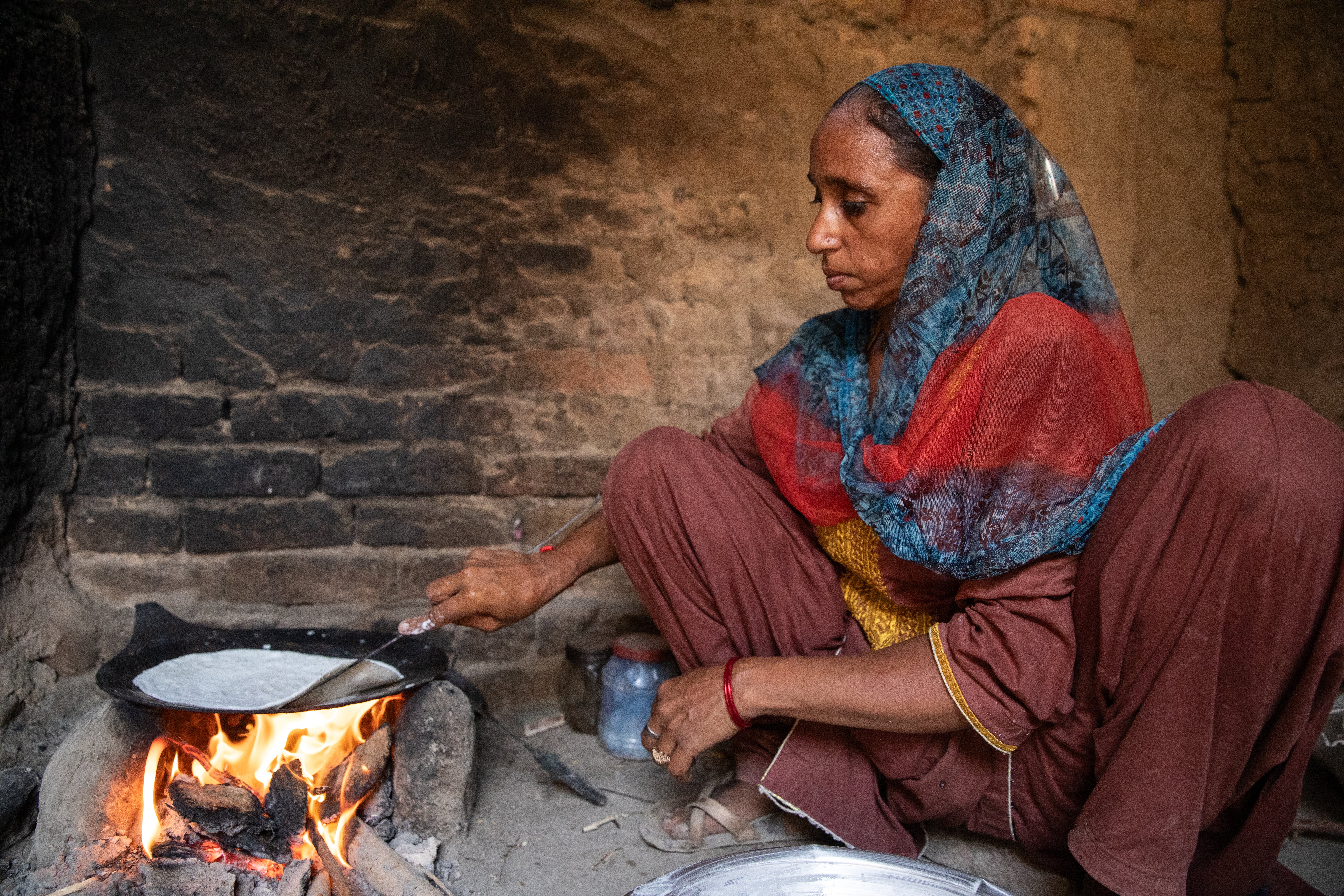
[ad_1]
New research, which has been published today, has found that failure to reduce global warming to 1.5 degrees Celsius will be 83 percent of children who are five years old today to dangerous levels of severe heat in their lives.
The report, published by Save the Children and VRIJE Universiteit Brussel, is planning the effect of the climate crisis on children by simulating climate results across several temperatures.
The world is currently on the right path for 2.7 ° C of warming, According to the latest policies and obligations. Such a scenario is expected to lead to 100 million children born in 2020 – 83 percent of the total of those born in that year – having to face unprecedented exposure to severe heat waves, which disrupts access to food and clean water and the closure of schools.
The researchers found that reaching the goal of the Paris Agreement 1.5 degrees Celsius would reduce this number to 62 million people, and protect 38 million children from dangerous heat waves, and to protect their mental and physical development.
Other climatic results such as researchers include hurricanes, crop failure, river floods, forest fires and dehydration.
For children born in 2020, a global temperature contract to a height of 1.5 ° C instead of 2.7 ° C by 2100 will provide eight million children from unprecedented exposure to crop failure; Five million unprecedented exposure to river floods; Five million unprecedented exposure to tropical hurricanes.
The reducing global temperatures rises to 1.5 ° C instead of 2.7 ° C will provide two million children of unprecedented exposure to dehydration and 1.5 million children of unprecedented exposure to forest fires.
Sherototi Agarawal, chief climate consultant in saving children, added that the new research explains how children are forced to withstand the crisis they cannot bear.
She said: “This new research shows that there is still hope, but only if we behave urgently and aspiring to reduce warming temperatures quickly to 1.5 degrees Celsius, putting children at the forefront and amid our response to climate change at every level.”
Martina Bogado Daverner, the chief climate defense consultant at Save the Children International, has told, Independent Current pressure on international aid budgets is to increase the possibility of negative effects.
She said: “At a time when nearly 200 million children worldwide depend on the help of saving life, and the climate crisis is exposed to their rights and their future, some of the richest countries in the world run their appearances on children and reduce their aid budgets.”
“These sudden financing cuts put children in life -threatening situations, while the extreme climate such as dangerous heat, hurricanes and crop failure is frequent and severe.
She added that many programs that support low -income countries with both climate mitigation and adaptation are already affected by aid reducing decisions.

With global temperatures already increased Average 1.3 ° C Compared to pre -industry levels, the sophisticated climate results already affect millions of children worldwide.
Zain, 13, has recently described the daily conflicts of his community due to climatic challenges and heat.
He said: “When we wake up in the morning and feel the heat. When we go to school, there are no fans or water there. There is no sunry and electricity is rare. When we go back, we are indulging because of the intense heat.” “When we go home, we often reduce the severe heat or suffer from diarrhea, stomach pain, and dizziness.”
At the time of Zain’s interview, the temperatures in the area were more than 50 ° C, during a heat wave that killed hundreds of people. But his region was also flooded due to floods, including floods in 2022 that left thousands of displaced people and 1700 dead.
These floods forced the same floods Zain and his family from his village after they destroyed their house, leaving them for several days without a suitable shelter or food for several days.
He said: “Previously, our hut was often in storms, and we were sliding in the rain. We had to work hard to rebuild it, only until it was detonated again.”

The family is equipped with a new house by the children’s rescue, which is flexible for the climatic threats they face in the area, with the bamboo roof keeps them cold and raised to protect them from floods.
But the charity warns in its new report that this support is threatened with “low -anxious” climate financing flows. The authors add that a global climate financing target of $ 300 billion for low -income countries by 2035, which was agreed upon at the COP29 climate conference last year, “no less than climate financing needs.”
“The generalization of children’s rights and their needs to make decisions on financial flows is equally important to address distinguished and increasing weaknesses,” the authors continue.
The first is at all Review focuses on the child An international climate financing, published in 2023, shows that only 2.4 percent of the main climate funds are allocated to projects that include responding activities for children.
“The climate financing goal was approved at COP29 last year to fail Martina Bogado Dafener told the children and their families to have climate change Independent.
“We have always said that climate financing should be additional to what comes from traditional aid budgets. With the contraction of all of the financing flows now, children’s rights and futures contracts are at risk without urgent and ambitious measures.”
This story is part of the independent Restructuring global aid series
